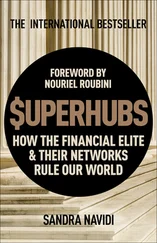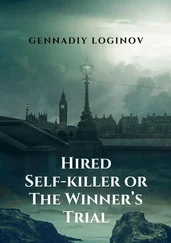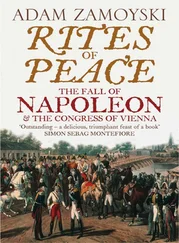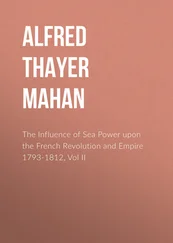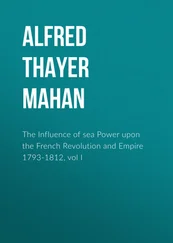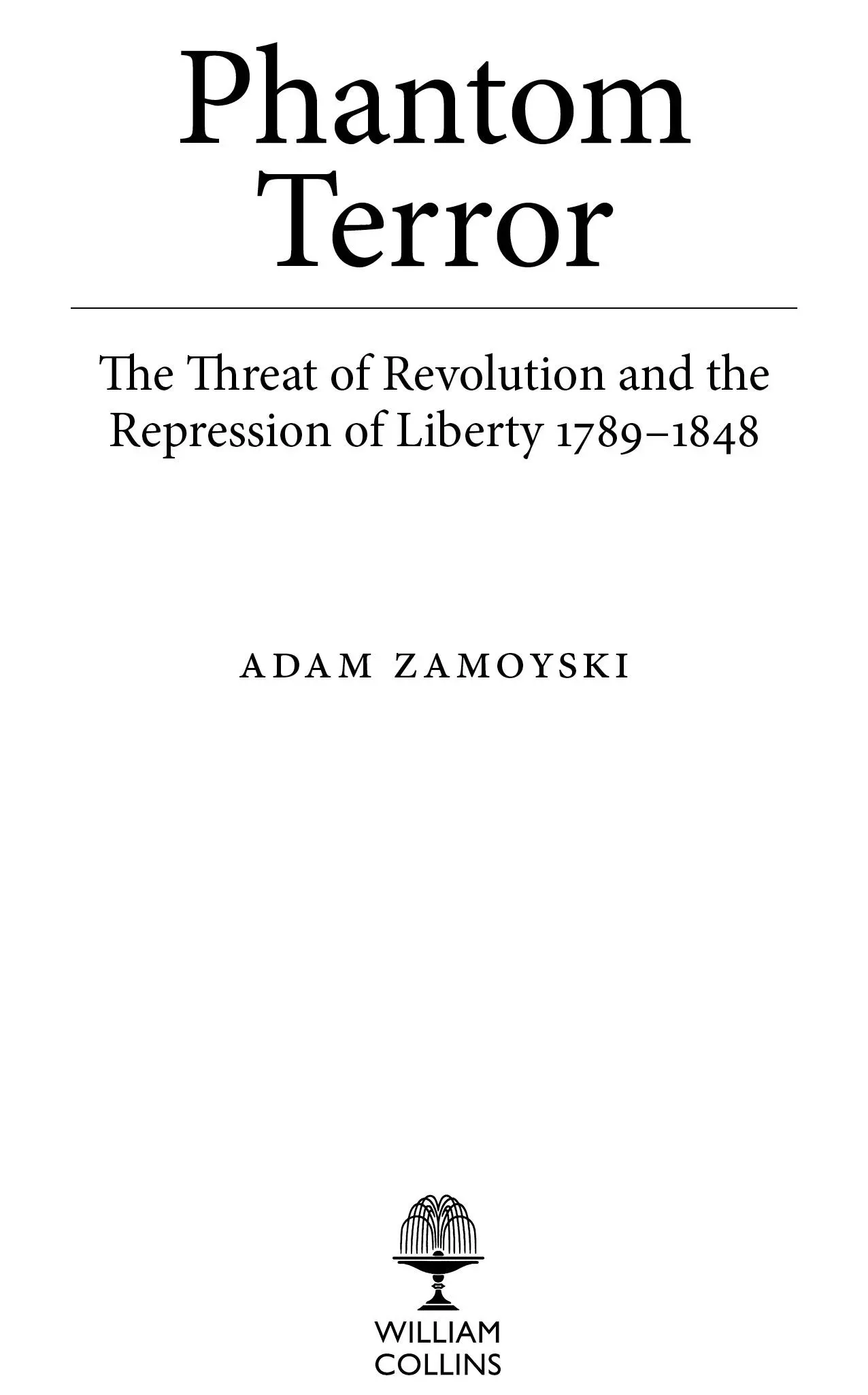
William Collins
An imprint of HarperCollins Publishers,
1 London Bridge Street
London SE1 9GF
WilliamCollinsBooks.com
First published in Great Britain by William Collins 2014
Copyright © Adam Zamoyski Ltd 2014
Adam Zamoyski asserts the moral right to
be identified as the author of this work
Jacket image: The Massacre of Versailles, October 5, 1789, engraving. French Revolution, France, 18th century (Photo by DeAgostini/Getty Images)
A catalogue record for this book is
available from the British Library
All rights reserved under International and Pan-American Copyright Conventions. By payment of the required fees, you have been granted the non-exclusive, non-transferable right to access and read the text of this e-book on screen. No part of this text may be reproduced, transmitted, downloaded, decompiled, reverse engineered, or stored in or introduced into any information storage retrieval system, in any form or by any means, whether electronic or mechanical, now known or hereinafter invented, without the express written permission of HarperCollins.
Source ISBN: 9780007282760
Ebook Edition © October 2014 ISBN: 9780007352203
Version 2015-10-05
Cover
Title Page
Copyright
Illustrations
Map: Europe in 1789
Map: Europe in 1815
Preface
1 Exorcism
2 Fear
3 Contagion
4 War on Terror
5 Government by Alarm
6 Order
7 Peace
8 A Hundred Days
9 Intelligence
10 British Bogies
11 Moral Order
12 Mysticism
13 Teutomania
14 Suicide Terrorists
15 Corrosion
16 The Empire of Evil
17 Synagogues of Satan
18 Comité Directeur
19 The Duke of Texas
20 The Apostolate
21 Mutiny
22 Cleansing
23 Counter-Revolution
24 Jupiter Tonans
25 Scandals
26 Sewers
27 The China of Europe
28 A Mistake
29 Polonism
30 Satan on the Loose
Aftermath
Notes
Picture Section
Sources
Index
By the Same Author
About the Publisher
Philosophy Run Mad, or a Stupendous Monument of Human Wisdom , by Thomas Rowlandson, 1792. (© The Trustees of the British Museum)
Tsar Alexander I. Portrait by George Dawe. (© English Heritage Photo Library/Bridgeman Images)
The Holy Roman Emperor Francis II. Portrait by Johann Baptist Edler von Lampi, 1816. (© DHM/Bridgeman Images)
William Pitt the Younger. Portrait by John Hoppner. (Rafael Valls Gallery London/Bridgeman Images)
An explosion in the rue Saint-Nicaise in Paris on 24 December 1800, the work of French royalists and Pitt’s agents bent on assassinating Napoleon. (The Art Archive/Alamy)
Joseph Fouché, the prototype of the modern secret policeman. Engraving by Philippe Velyn, c.1810. (akg-images)
The murder of August von Kotzebue at Mannheim on 23 March 1819. (akg-images)
The Wartburg Festival, held on 18 October 1817 to celebrate the tercentenary of the Reformation and the fourth anniversary of the Battle of Leipzig. Woodcut c.1880. (akg-images)
Prince Klemens Wenzel von Metternich, chancellor of Austria. Portrait by Josef Danhauser. (© DHM/Bridgeman Images)
Two Men Contemplating the Moon (detail), by Caspar David Friedrich, 1819. The painting exercised the Prussian police, as the two men are wearing the banned ‘Old German’ costume and might be plotting. (Fine Art/Alamy)
The Radical’s Arms by George Cruikshank, published 13 November 1819 by George Humphrey. (© The Trustees of the British Museum)
Drawing of an ‘anti-cavalry machine’. (The National Archives, Kew. TS II/200)
The Duke of Wellington, arch-reactionary and apologist for the ‘Peterloo Massacre’. Attributed to Thomas Lawrence. (Huntington Library/Superstock)
The Peterloo Massacre, 16 August 1819. By George Cruikshank, published 1 October 1819 by Richard Carlile. (Manchester Art Gallery/Bridgeman Images)
Radical Parliament!! 1820 . By George Cruikshank, c.1820. (© The Trustees of the British Museum)
The murder of the duc de Berry on 13 February 1820. By Louis Louvel. (RA/Lebrecht Music & Arts)
A document purporting to be a copy of the hieroglyphs used by a secret society. (Documents from Archives nationales, Paris, F/7 Police Générale 6684, Sociétés secrètes, Dossier 4)
A meeting of the Carbonari, as imagined by a contemporary illustrator. (Private Collection/Archives Charmet/Bridgeman Images)
A drawing supplied to the French police by an informer, supposedly of daggers being forged by French and Italian secret societies for the murder of European monarchs. (Documents from Archives nationales, Paris, F/7 Police Générale 6684, Sociétés secrètes, Dossier 4)
General Alexei Arakcheev, by an anonymous artist, 1830s. (© Fine Art Images/AGE Fotostock)
Russian political prisoners in the dungeons of the Schlusselburg fortress. (Everett Collection Historical/Alamy)
The Peter and Paul fortress in St Petersburg. (RIA Novosti)
Count Alexander von Benckendorff, head of the notorious Third Section. Portrait by Yegor Bottman. (Fine Art Images/AGE Fotostock)
Tsar Nicholas I. Portrait by Vassily Tropinin, 1826. (© Heritage Image Partnership Ltd/Alamy)
Russian troops parade following the suppression of the Polish insurrection of 1830. Painting by Nikanor Grigorievich, 1837. (akg-images)
The remains of the ‘ machine infernale ’ used by Giuseppe Fieschi in his attempt to murder King Louis-Philippe. (Roger-Viollet/REX)
Infortunées victimes du 27, 28 et 29 Juillet 1830 , by Grandville. (Bibliothèque nationale de France)
The folkloric and nationalist jamboree held at the castle of Hambach in May 1832. After a drawing by F. Massler. (akg-images)
Bombarding the Barricades, or the Storming of Apsley House , published February 1832 by J. Bell. (© The Trustees of the British Museum)
Barrikade in der Burggasse zu Altenburg am 18 Juni 1848 . (akg-images)
Political prisoners at Trier following the suppression of the local revolt in 1848. By Johann Velten, 1849. (akg-images/De Agostini Picture Lib./A. Dagli Orti)
Patrol of the Vienna National Guard on 14 March 1848. (akg-images)
The Great Water Snake as it Appeared to Many in 1848 . Published 30 December 1848. (akg-images)
General Survey of Europe in August 1849 , by Ferdinand Schroeder, 1849. (akg-images)
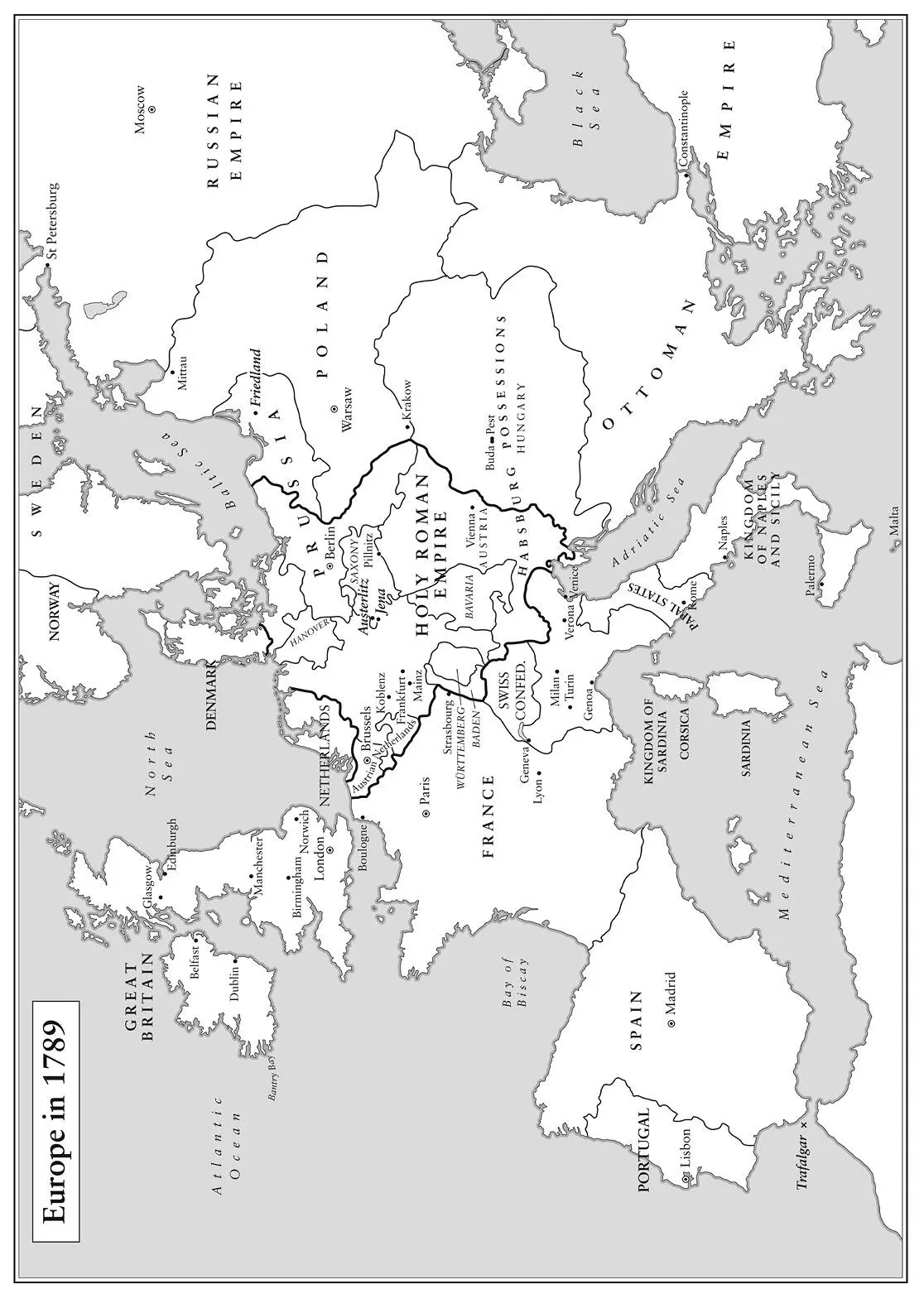
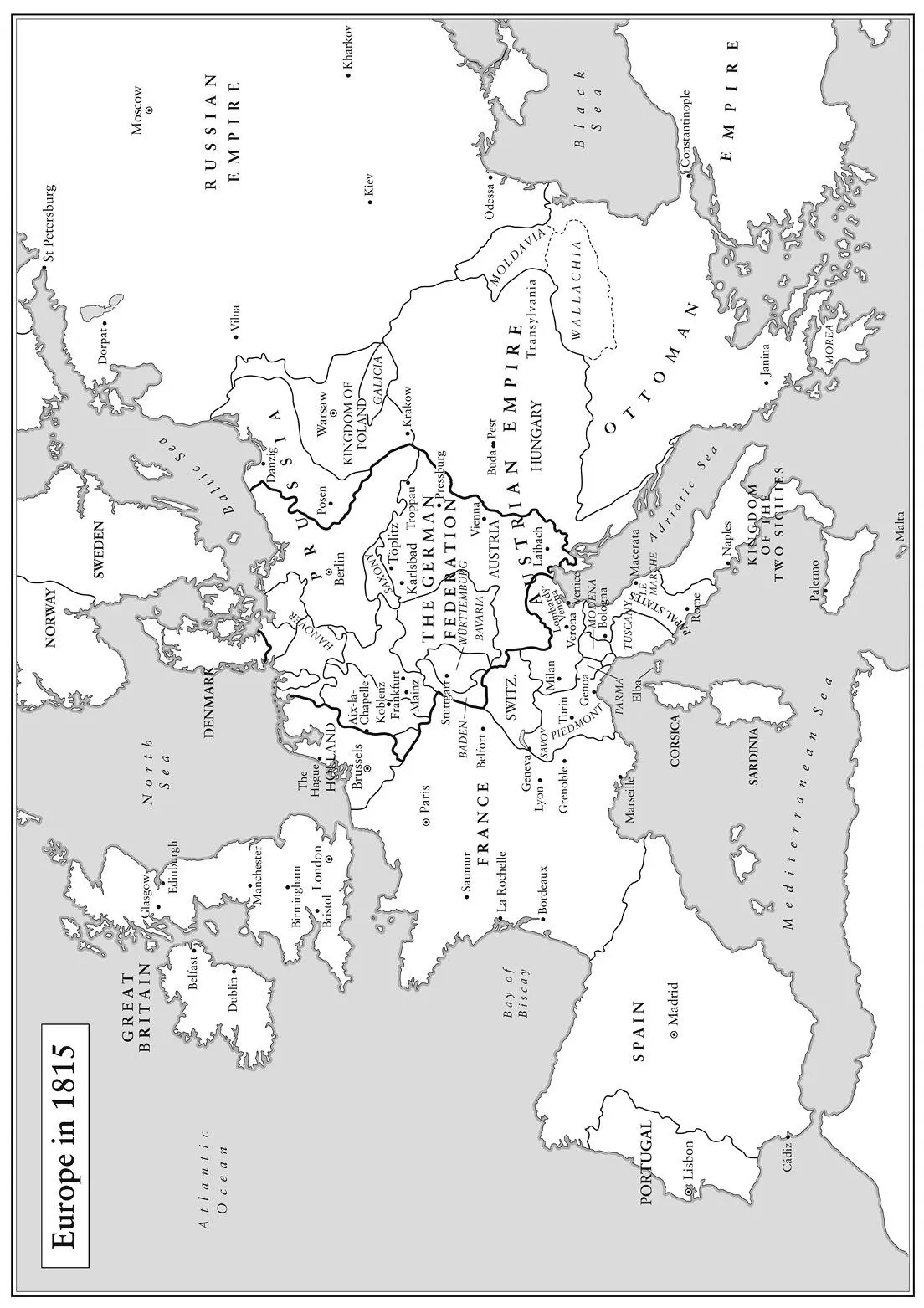
The Battle of Waterloo, Napoleon’s final nemesis, also marked the defeat of the forces unleashed by the French Revolution of 1789. This had challenged the foundations of the whole social order and every political structure in Europe. It had opened a Pandora’s Box of boundless possibilities, and horrors: the sacred was profaned, the law trampled, a king and his queen judicially murdered, and thousands of men, women and children massacred or guillotined for no good reason. The two and a half decades of warfare that followed saw thrones toppled, states abolished and institutions of every sort undermined as the Revolution’s subversive ideas swept across Europe and its colonies.
Читать дальше




